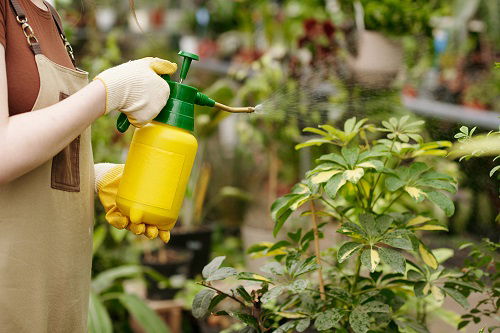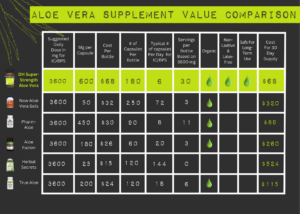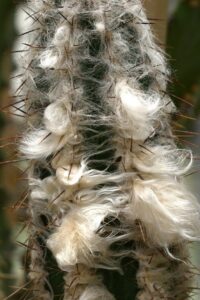Spider mites are notorious pests that can wreak havoc on a variety of plants, from decorative houseplants to robust cacti. Among the myriad of treatment options available, hydrogen peroxide has emerged as a compelling solution. This article delves into the efficacy and safety of using hydrogen peroxide to combat spider mites, while providing insights and practical advice for plant enthusiasts.
Hydrogen peroxide, a common household chemical, is more than just a disinfectant; it possesses properties that can effectively target spider mites without the severe consequences associated with synthetic pesticides. Understanding the mechanism through which hydrogen peroxide operates and the specific methods for application is crucial for maximizing its benefits while ensuring the health of your plants.
Spider mites thrive in warm, dry conditions and can multiply rapidly, often going undetected until their damage becomes evident. Their presence typically manifests as stippling on leaves or fine webbing, indicating significant infestations. This underscores the need for a prompt and effective response to mitigate the damage they cause.
In the following sections, we will explore the composition of hydrogen peroxide, its application methods, and its advantages as a natural solution against spider mites.
Understanding the Chemistry of Hydrogen Peroxide
Hydrogen peroxide (H₂O₂) is a colorless liquid often utilized for its antiseptic properties and as a bleaching agent. Its chemical structure allows it to release reactive oxygen species when it breaks down, leading to oxidative stress in pests like spider mites. This oxidative burst can damage their respiratory systems and cellular structures, ultimately leading to their demise.
The effectiveness of hydrogen peroxide against spider mites can be attributed to its dual action: it not only acts as a pesticide but also serves as a fungicide, eliminating potential fungal infections that can complicate plant health. When diluted properly, it poses a low risk to many plant species, making it a versatile choice for plant care.
Application Methods: How to Use Hydrogen Peroxide Effectively
When using hydrogen peroxide for spider mite control, the method of application is fundamental to its success. Here, we outline several effective techniques:
Dilution Variations
For optimal results, hydrogen peroxide should be diluted. A common recommendation is a solution of 1 to 3 percent concentration. This dilution ensures that the active ingredient is strong enough to combat spider mites, yet gentle enough to avoid harming the plant. It’s advisable to test a small section of a leaf prior to full application to gauge the plant’s sensitivity.
Targeted Spraying
Using a spray bottle, apply the diluted hydrogen peroxide solution directly onto the affected areas of the plant. Aim for the undersides of leaves where spider mites tend to congregate. It is best to perform this treatment during the early morning or late evening to reduce the risk of leaf burn from direct sunlight.
Soaking Method
For severe infestations, consider a soaking method. Submerge infested plants (those that can tolerate such treatment) in a prepared hydrogen peroxide solution for a few minutes. It is crucial to ensure that the solution reaches all affected surfaces. Follow this with a rinse in clean water to remove any residual solution, safeguarding the plant’s health.
Environmental Considerations
While hydrogen peroxide has proven beneficial, it is important to use it judiciously. Frequent applications may disrupt the beneficial insects and microorganisms that contribute to a balanced ecosystem. Always monitor the plant’s response and adjust the frequency of application based on observation. An integrated pest management approach will yield the best results, combining biological controls and environmental adjustments.
The Advantages of Hydrogen Peroxide as a Spider Mite Remedy
This solution presents several distinct advantages that make it an appealing choice for those seeking to manage spider mite populations:
Eco-Friendly Alternative
Hydrogen peroxide decomposes into oxygen and water, leaving no harmful residues behind. This characteristic makes it an environmentally friendly option that aligns with sustainable gardening practices. It is particularly attractive for organic gardeners who wish to avoid synthetic chemicals.
Prompt Action
The quick-acting nature of hydrogen peroxide allows for immediate intervention. Its ability to disrupt spider mite respiration results in rapid results, minimizing crop damage and preserving plant vitality. Timely treatment can significantly reduce spider mite populations before they escalate.
Accessibility and Affordability
As a common household item, hydrogen peroxide is readily available and inexpensive. Its accessibility democratizes pest control, enabling gardeners of all levels to engage in effective pest management without significant financial investment.
Conclusion: Embracing Safe Solutions for Healthy Plants
Utilizing hydrogen peroxide to combat spider mites offers both efficacy and safety, making it a commendable option for plant caretakers. By understanding its properties and methods of application, gardeners can protect their plants without resorting to harsh chemicals. As with all pest control measures, vigilance and observation are key. The integrative approach will foster a thriving plant ecosystem while minimizing the risk of pest resurgence. Through informed and thoughtful application, hydrogen peroxide serves as a potent weapon against spider mites, ensuring that your plants remain healthy and vibrant.





Leave a Comment